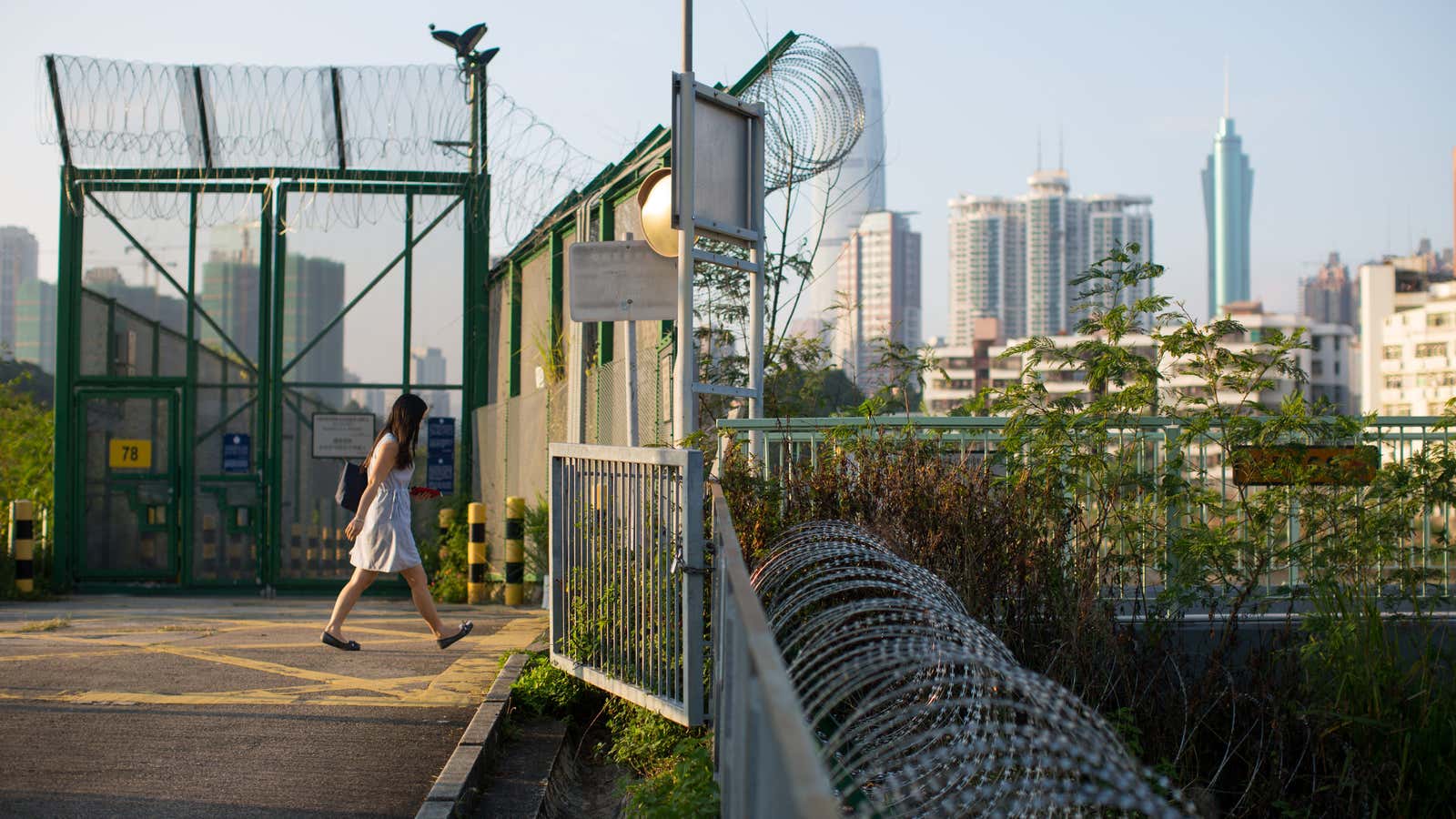This story originally published in 2017 as part of a series on the 20th anniversary of Hong Kong’s handover.
No place better illuminates the current state of affairs in Hong Kong than its edges.
Twenty years after the former British enclave reverted to Chinese rule, a formal border is still in operation between mainland China and Hong Kong today. A 25-mile-long boundary runs in the middle of Shenzhen River, separating Hong Kong from that southern Chinese metropolis, and giving Hong Kong the moniker of a “Special Administrative Region” (SAR). Travelers still need to clear passport controls when moving between Hong Kong and the mainland, just as they would at any other international border.
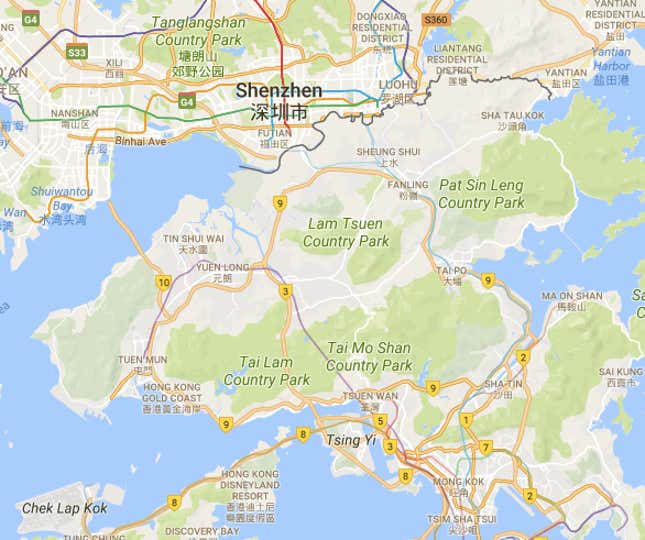
Under arrangements brokered between Britain and China, Hong Kong behaves and operates like a quasi-state entity in most aspects. Deng Xiaoping, the Chinese leader who was behind the “one country, two systems” framework, saw value in keeping Hong Kong administratively separate from mainland China. By maintaining the status quo, Deng was eager to shore up global confidence—and capital—in Hong Kong, when the city’s political landscape and economic future appeared precarious. A hard-sell of territorial integration would have backfired, especially at a time when memories of the 1989 Tiananmen Square crackdown were still raw. It was a temporary fix that bought time for all parties involved, for at least 50 years.
Clarity in territorial demarcation was also crucial to implementing separate jurisdictions between Hong Kong and the rest of China. The “two systems” principle mandates that no Chinese laws be enforced within the SAR, while the more generous protection of freedom and rights offered by the Basic Law—Hong Kong’s mini-constitution—may not be extended beyond the confines of the SAR.
Equally significant was the political subtext conveyed through this border arrangement. Roping off Hong Kong as a space of territorial exception was also a showpiece aimed at Taiwan, an arguably more ambitious pursuit for Deng and his successors.
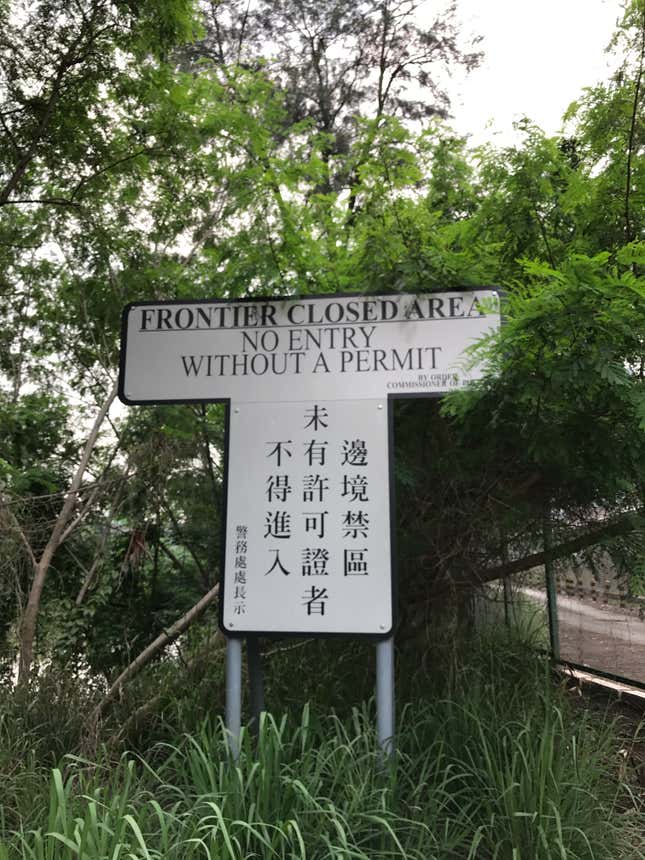
A necessary evil
This is why, 20 years after Hong Kong reverted to Chinese sovereignty, this antiquated boundary continues to matter. Lawmakers from both ends of the political spectrum understand that the “one country, two systems” framework presumes and hinges upon territorial separation, however counterintuitive this arrangement may seem to state-propagated narratives of territorial unity. Rhetoric aside, no politician seriously believes that Hong Kong can do without a robust border regime. A “firewall” must exist for Deng’s blueprint to succeed, even if this means extending the legacy of colonial geopolitics.
Indeed, the irony that Hong Kong continues to operate like a treaty port after the handover is a source of constant chagrin to many patriots in China; any arrangements resembling extraterritoriality are reminiscent of the feelings of deep national shame associated with the Qing dynasty’s demise, when the country’s weakness allowed Western powers to invade China, and ultimately resulted in the cessation of Hong Kong to Britain.
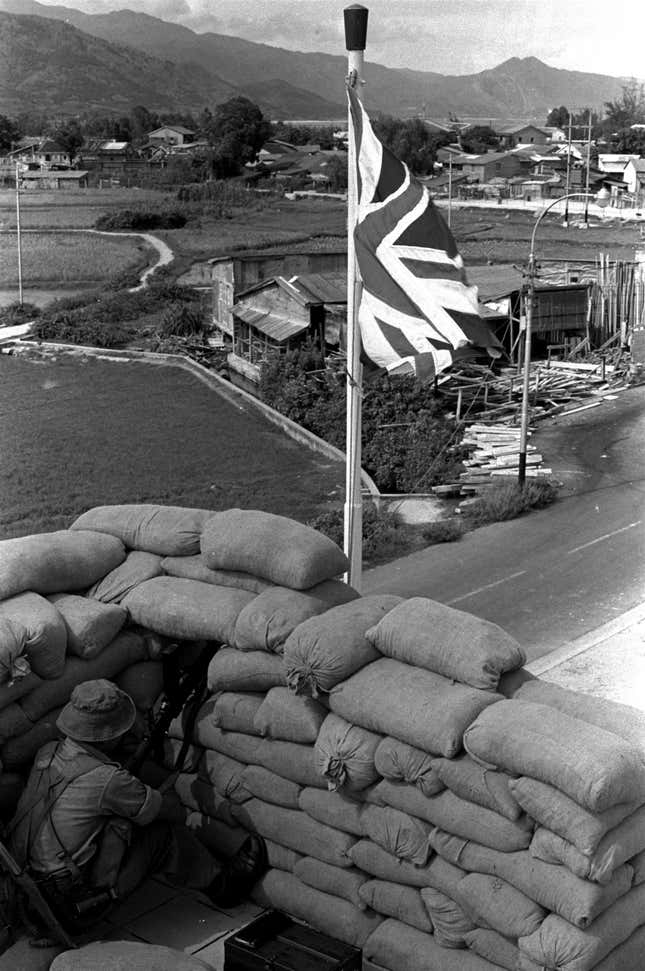
Yet it isn’t just wary Hong Kongers who wish to keep the boundary in place. Out of political pragmatism, Beijing also, at times, appreciates this strategic separation. During and after the Umbrella Movement protests of 2014, several student protesters and politicians from Hong Kong were refused entry to mainland China. For China, this boundary—once an acrimonious reminder of how Western imperial powers brought China to its knees—became handy for the People’s Republic to filter out “subversive elements” deemed detrimental to its interior stability. It helps intercept undesirable information, material, or individuals at the frontier before they slip into China and become more difficult to purge. As a measure of risk management, maintaining a boundary allows Beijing to better control interactions between the mainland and the SAR—a form of administrative quarantine.
The paradox of keeping a subnational boundary shows how the “one country, two systems” framework struggles to accommodate contradictory logics. For democracy-minded residents of Hong Kong, accepting “one country” is a means to preserving two systems. To leaders of the Chinese Communist Party, tolerating two systems is a means to achieving one country. These are bargains of very different sorts, and neither side appears willing to relent. Is the Hong Kong-mainland China relationship a narrative of union by virtue of strategic separation, or is it a tale of surviving autonomy in spite of formal unification?
Booksellers beware
Today, the 30-kilometer Hong Kong-Shenzhen boundary still retains the look of a militarized frontier at the peak of the Cold War. Barbed-wire fences seal both sides of Shenzhen River. Lands near the border are declared “Frontier Closed Area” and kept from public access, a no-man’s land. But signs of porosity are increasingly common. Mainland Chinese “parallel traders” hauling tax-free goods purchased in Hong Kong for resale in China roam amok in towns adjacent to the boundary, drawing the ire of local residents and crowding border checkpoints beyond capacity. More than 30,000 children now cross the border every day to attend public schools in Hong Kong, many of whom were born to mainland parents with no residence rights in the SAR.
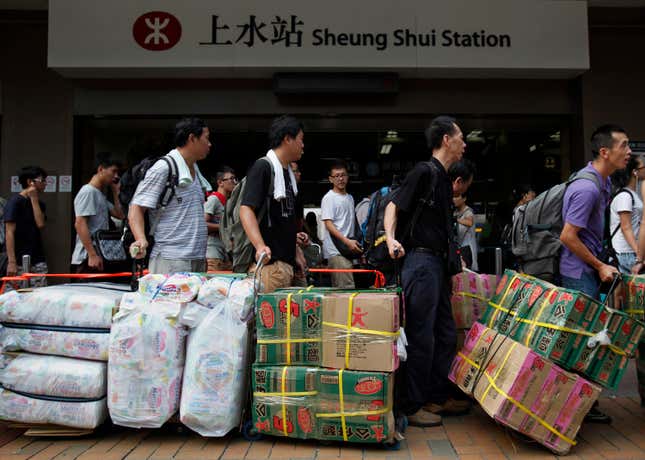
One of the most heated debates in Hong Kong right now concerns immigration and customs arrangements at the Hong Kong terminus of a cross-boundary high-speed rail link between the SAR and Guangzhou. Train logistics proposals call for pre-clearance of Chinese border inspection at the Hong Kong station, a protocol similar to Eurostar boarding procedures between London and Paris. Yet the Basic Law explicitly prohibits Chinese law enforcement agents from operating within Hong Kong’s borders. The thorny workaround is for the Hong Kong government to effectively cede a portion of the passenger terminus, the train depot, and the entire underground rail tunnel to Chinese jurisdiction. This concession would exclude most rail facilities from the legal boundaries of the SAR, and potentially give Chinese police free rein to perform extraterritorial arrest or detention in Hong Kong. In support of that arrangement, a pro-China lawyer went so far as to suggest official boundaries of the SAR do not extend to tunnels and space under ground.
But all these examples pale in comparison to the abductions of five Hong Kong-based booksellers in 2015, who later mysteriously reappeared on Chinese TV “confessing” their crimes. One of them, Lam Wing-kee, boldly spoke out about his abduction by Chinese authorities for nearly 8 months. Another bookseller, Lee Bo, was believed to have been spirited across the boundary by Chinese agents for interrogation. The ominous realization that Hong Kong residents could be subject to clandestine apprehension by Chinese agents within the SAR—and that the SAR government is unwilling to act in such an instance—demonstrates the constraints of either a “firewall” or “two systems.”
In search of Hong Kong’s own memories
No one yet knows how the physical boundary will evolve from now on, but there are two clear trends. One is that governments on both sides will continue to make the existing boundary more flexible, if not permeable. The other is that resistance against the fear of untrammeled mobility between Hong Kong and the mainland will persist particularly among Hong Kong’s youth, strengthening the border’s symbolic importance.
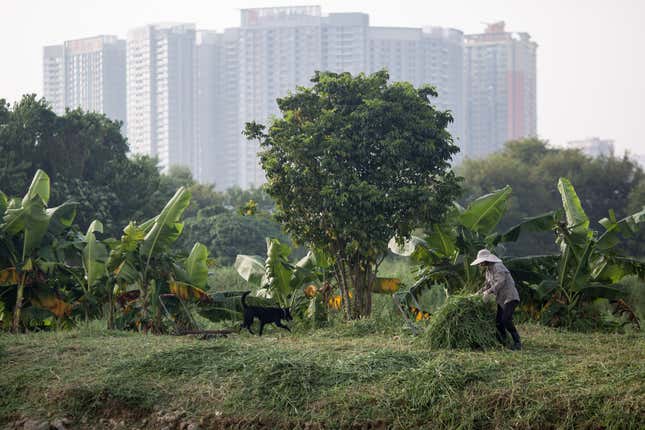
In recent years, the ecological green-belt lacing the border was the site of some of the most visceral acts of resistance by Hong Kong people against the mainland, seen for example in the struggle to prevent the demolition of a village to make way for the high-speed rail, which mobilized young protesters to perform acts of resistance like a Tibetan “prostrating walk” (link in Chinese) across the city. A lawmaker involved in that struggle, and who has made his name fighting for rural and environmental rights, also won a seat in Hong Kong’s legislature last year with the highest number of votes among all candidates. It is this renewed search for Hong Kong’s own histories, memories, and indigenous cultures—broadly called “localism”—that has brought together rural villagers and cosmopolitan youth in an unlikely alliance.
These trajectories are unlikely to be tolerated by Beijing. Beijing treats “localism” on a par with separatism; it is a red line that must not be crossed. Perhaps this is how the Hong Kong-China border will be defined in the SAR’s next 30 years. No longer a significant marker of territorial demarcation, the boundary may be better seen as a reflection of ideological divides and political confrontation. But this may be Hong Kong’s best bet at retaining its autonomy: As long as it remains the site of a critical and vibrant civic society, Beijing will find reason enough to want to keep Hong Kong on the other side of the fence.
Jeffrey Twu is an anthropologist interested in Hong Kong’s frontier with China. He is currently pursuing a doctoral degree at Columbia University in New York.
Read Quartz’s complete series on the 20th anniversary of the Hong Kong handover.
